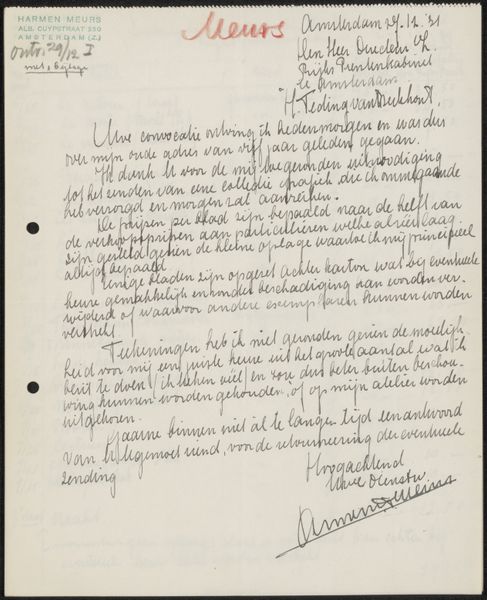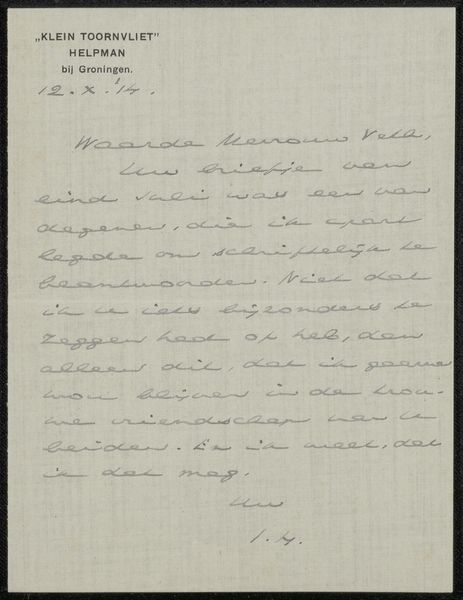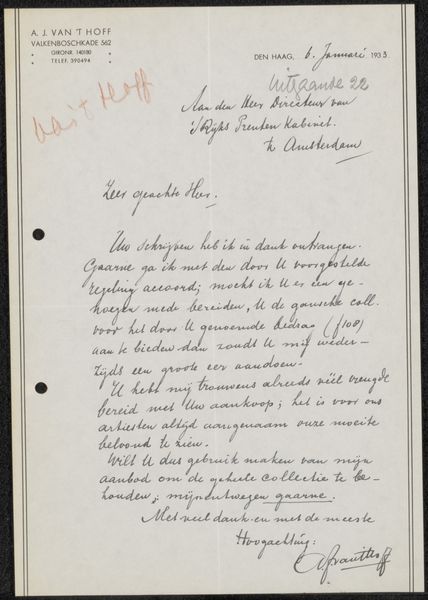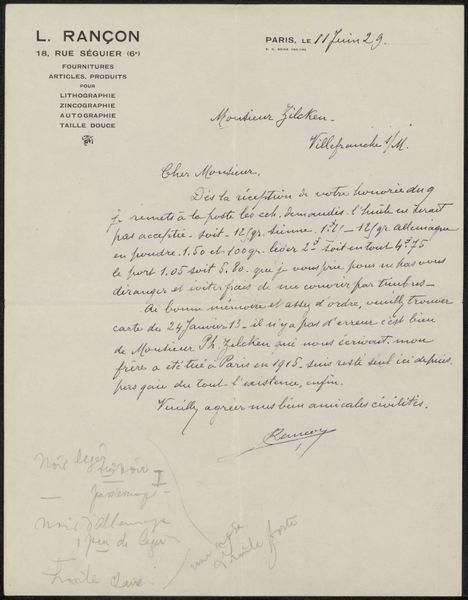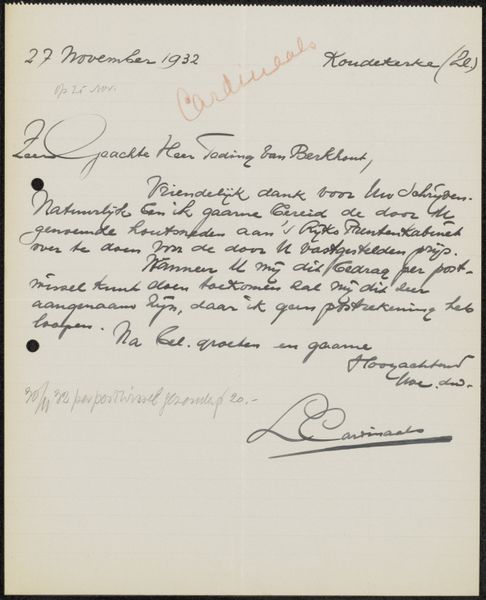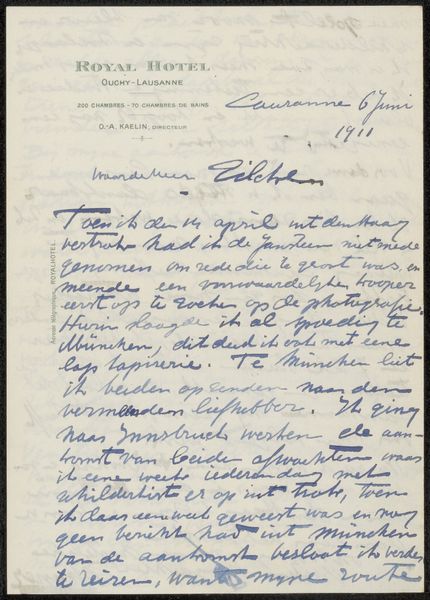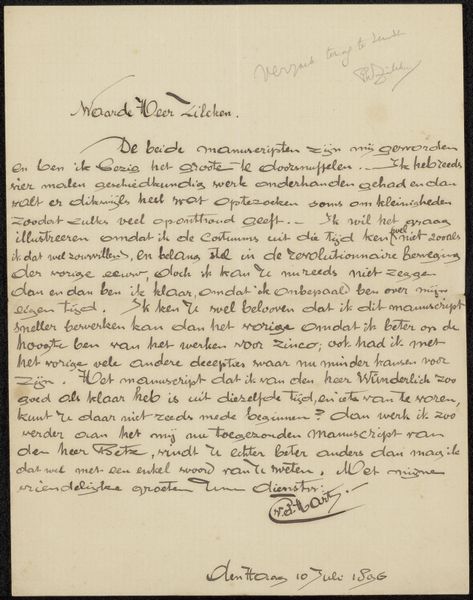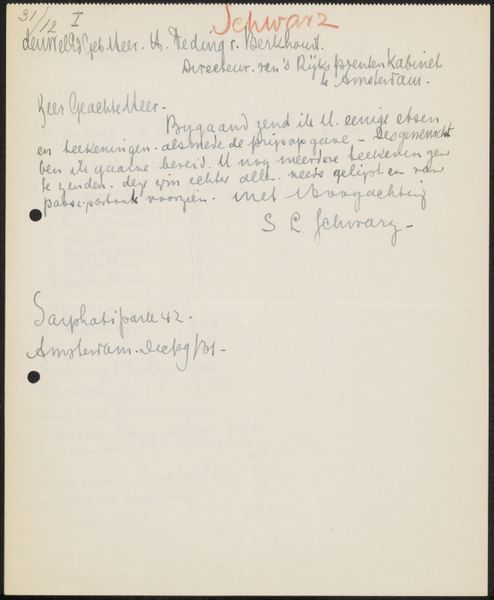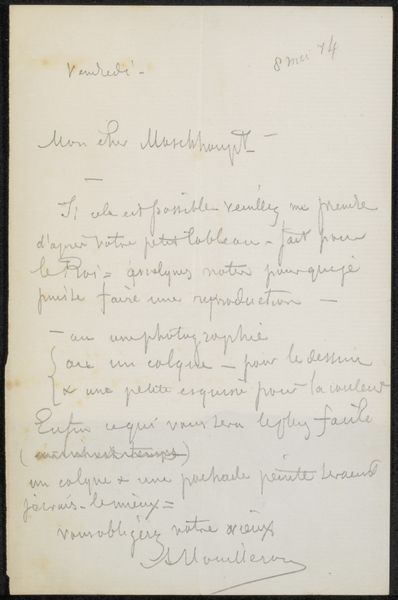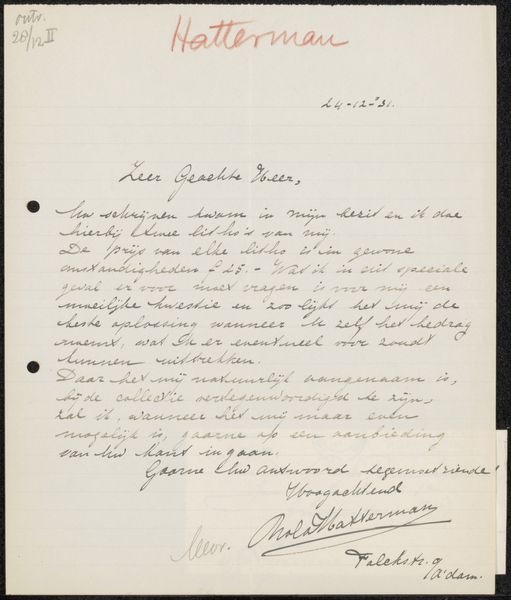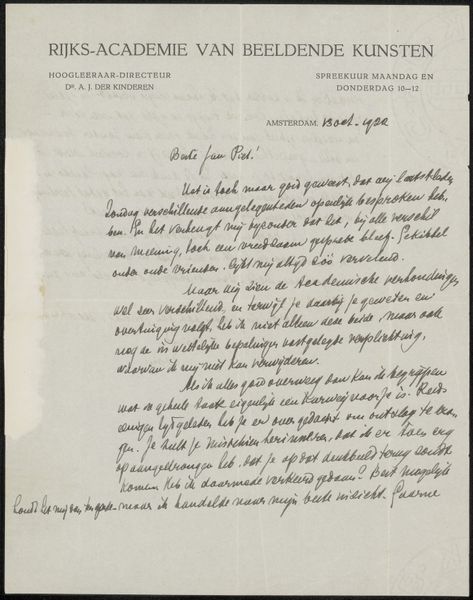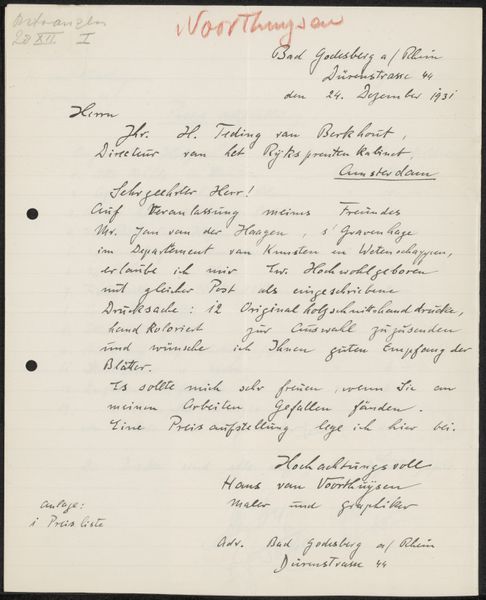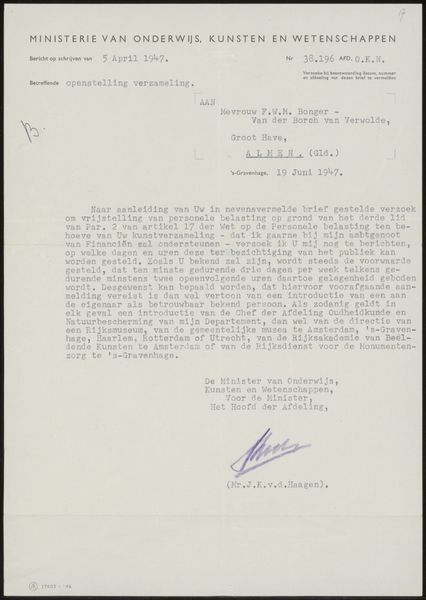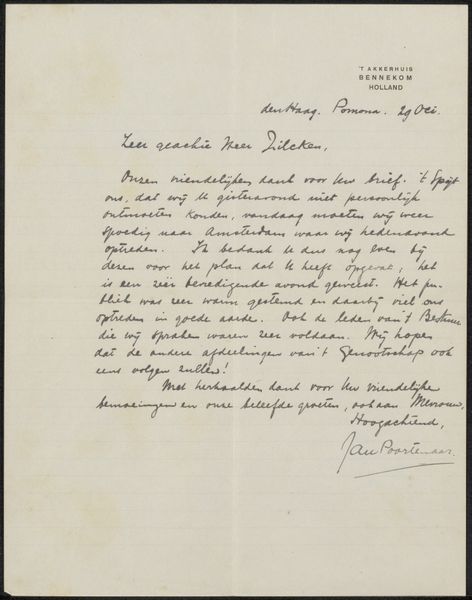
drawing, paper, ink
#
drawing
#
hand-lettering
#
sketch book
#
hand drawn type
#
hand lettering
#
paper
#
personal sketchbook
#
ink
#
hand-drawn typeface
#
sketchbook drawing
#
storyboard and sketchbook work
#
sketchbook art
#
calligraphy
#
small lettering
Copyright: Rijks Museum: Open Domain
Curator: Ah, yes. "Brief aan jonkheer Hendrik Teding van Berkhout," likely from 1932, a drawing in ink on paper by Harmen Meurs. The artwork appears to be a letter. It feels very personal, a direct line to the artist’s thoughts, which are recorded via calligraphy, of all things. What catches your eye initially? Editor: The handwritten nature really grabs me, it feels so immediate and tactile, but as it is an example of calligraphy, do we consider this an artwork first or a letter? The letter includes words but the letter form is itself the artform, almost a drawing. How do we consider its role, would you say? Curator: That’s an excellent question! As a historian, I consider how institutions and social structures affect art, including even letters and other ephemera. In this case, who was Hendrik Teding van Berkhout and what was the "Rijks Prentenkabinet" referenced in the letter, and what role did both play in Meurs's career? Knowing that could change how we value this artifact. Consider the social function of letters, which declined after the popularization of telephones. Editor: So, by examining the context, such as this person, Hendrik Teding van Berkhout and the institution to which he belonged, we could unlock a new layer of meaning about its original context. Is that fair to say? Curator: Precisely! What we initially perceive as simply a letter reveals the network of relationships within the art world of that time. Also, where did this letter appear (in a personal sketchbook)? That could imply a stream-of-consciousness or intention behind what the artist had created and why they had produced such personal documents. Editor: I hadn't thought of it that way! It highlights how much art is embedded in the socio-political world, even something seemingly private. Thank you. Curator: My pleasure! It just underscores that understanding the social and historical context of art is invaluable, it opens doors to fresh ideas about not only "art", but even something that does not obviously appear so.
Comments
No comments
Be the first to comment and join the conversation on the ultimate creative platform.
